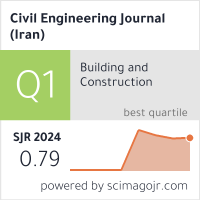Optimization of the Allowable Speed on Iran's Freeways to Reduce Violations and Accidents, Using Zero-Truncated Poisson Regression Model
Downloads
Countries from all over the world including Iran, consider different maximum allowable speeds to control and maintain traffic safety on their freeways, but these actions have not been successful even with the police surveillance. Even though speeding is not the only cause of accidents, past studies indicate that speed plays a vital role in such events. Since respecting the speed limits have not prevented driving violations and traffic accidents, there's doubt among decision-makers, about the applicability and safety of these legal speed limits in different weather and traffic conditions. They think perhaps there is a need for an optimized and safe speed after doing required studies. Even in the police instructions and notifications in unfavorable weather conditions, the word "safe speed” is used more than the "legal speed” and its limit is not mentioned and its determination is assigned to drivers according to their mental and physical conditions, type of vehicle, and the weather condition. This matter leads to uncertainty for drivers in selecting the right speed.This research is intended to achieve a safe and optimized speed for freeways in Iran, by considering a reasonable adjustment which is acceptable by the drivers so that a substantial decrease in driving violations and accidents could be observed. This work is done by using models developed for predicting violations and accidents on Iran's freeways. The results indicate that by reducing the allowable speed of freeways from 125km/h to 105km/h, a 48% and 23% reduction of violations and traffic accidents could be achieved.
Downloads
[2] M.Imprialou, M.-I., et al., Re-visiting crash–speed relationships: A new perspective in crash modelling. Accident Analysis & Prevention, January 2016. 86: p. 173-185. doi: 10.1016/j.aap.2015.10.001
[3] Augeri, M., P. Cozzo, and S. Greco, Dominance-based rough set approach: An application case study for setting speed limits for vehicles in speed controlled zones. Vol. 89. 2015.
[4] Wilmots, B., et al., Speed control with and without advanced warning sign on the field: An analysis of the effect on driving speed. Safety Science, 2016. 85: p. 23-32. doi: 10.1016/j.ssci.2015.12.014
[5] Adell, E., A. Várhelyi, and M.d. Fontana, The effects of a driver assistance system for safe speed and safe distance – A real-life field study. Transportation Research Part C: Emerging Technologies, 2011. 19(1): p. 145-155. doi: 10.1016/j.trc.2010.04.006.
[6] Ando, R. and Y. Mimura, An analysis on possibility of intelligent speed adaptation in terms of drivers' consciousness. Journal of Traffic and Transportation Engineering (English Edition), 2015. 2(3): p. 136-144. doi: 10.1016/j.jtte.2015.03.002
[7] Batrakova, A. and O. Gredasova, Influence of Road Conditions on Traffic Safety. Procedia Engineering, 2016. 134: p. 196-204. doi: 10.1016/j.proeng.2016.01.060
[8] Hadji Hosseinlou, M., S.A. Kheyrabadi, and A. Zolfaghari, Determining optimal speed limits in traffic networks. IATSS Research, 2015. 39(1): p. 36-41. doi: 10.1016/j.iatssr.2014.08.003.
[9] Cao, J., et al., Exploring the impact of a coordinated variable speed limit control on congestion distribution in freeway. Journal of Traffic and Transportation Engineering (English Edition), 2015. 2(3): p. 167-178. doi: 10.1016/j.jtte.2015.03.005.
[10] Organization, R.M.a.T. Iran Road Maintenance and Transportation Organization Website. Available from: www.rmto.ir.
[11] Ayati, E., The Cost of Accidents, Theory and Practise. 2009: Ministry of Road and Urban Development. 750.
- Authors retain all copyrights. It is noticeable that authors will not be forced to sign any copyright transfer agreements.
- This work (including HTML and PDF Files) is licensed under a Creative Commons Attribution 4.0 International License.![]()















